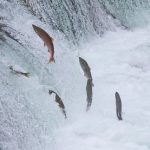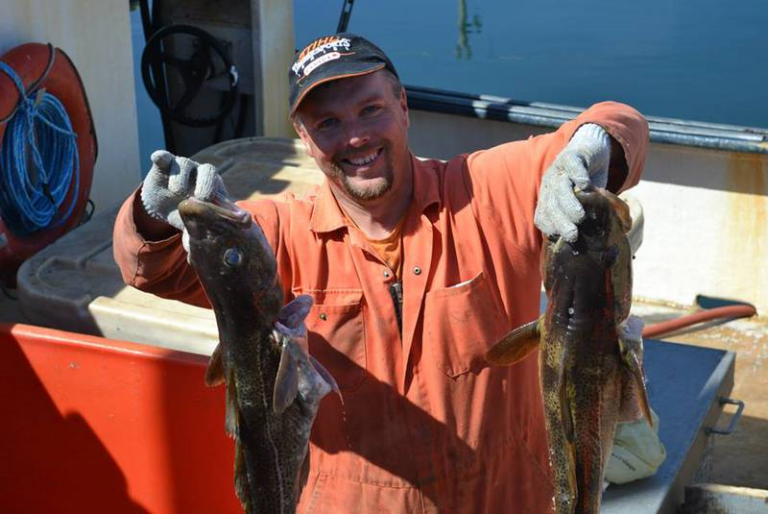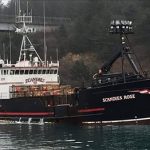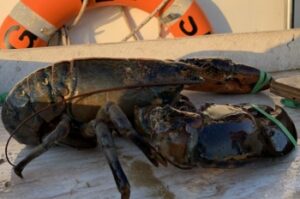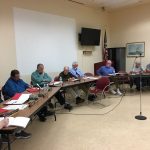Category Archives: Western Pacific
What Quota? Hawaii Longliners Are Fishing For Ahi Again
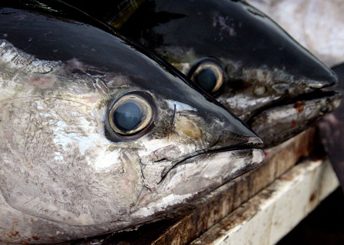 Hawaii’s longline fishermen are back at sea in search of more ahi after extending their quota limit through an agreement with the Commonwealth of the Northern Mariana Islands. The 2016 season had ended early, as it has for the past few years, when the longline fleet in late July hit its 3,554-ton limit for bigeye tuna in the Western and Central Pacific. The deal between Quota Management Inc. President Khang Dang and Northern Marianas Gov. Ralph Torres involves paying the territory $250,000 for 1,000 tons of its 2,000-ton limit. Under the agreement, QMI can assign its rights and obligations to the Hawaii Longline Association, a wholly owned subsidiary of QMI. The association is a nonprofit trade group formed to support the $100 million commercial longline fisheries industry, which includes a fleet of roughly 140 vessels ported in Honolulu. (the author seem to have an axe to grind) Read the story here 09:53
Hawaii’s longline fishermen are back at sea in search of more ahi after extending their quota limit through an agreement with the Commonwealth of the Northern Mariana Islands. The 2016 season had ended early, as it has for the past few years, when the longline fleet in late July hit its 3,554-ton limit for bigeye tuna in the Western and Central Pacific. The deal between Quota Management Inc. President Khang Dang and Northern Marianas Gov. Ralph Torres involves paying the territory $250,000 for 1,000 tons of its 2,000-ton limit. Under the agreement, QMI can assign its rights and obligations to the Hawaii Longline Association, a wholly owned subsidiary of QMI. The association is a nonprofit trade group formed to support the $100 million commercial longline fisheries industry, which includes a fleet of roughly 140 vessels ported in Honolulu. (the author seem to have an axe to grind) Read the story here 09:53
Ushering industrial aquaculture into the Pacific Islands Region EEZ is anything but sustainable
 Right now, anyone can throw a cage into the open ocean within the Economic Enterprise Zone and begin an aquaculture operation, said Joshua DeMello, of the Western Pacific Regional Fishery Management Council. The beginning of that aquaculture management program for the Pacific Islands Region is in the works, under the eye of the National Oceanic and Atmospheric Administration National Marine Fisheries Service and in conjunction with Western Pacific Regional Fishery Management Council. The entities are preparing a programmatic environmental impact statement (PEIS) analyzing the possible environmental impacts of the proposed management program and alternatives. “The purpose of it is to develop a management program to support sustainable, economically sound aquaculture in the Pacific Island Region,” DeMello said. The PEIS process looks at options for permit duration, whether cages should be metal or net pens, and allowable species. But ushering industrial aquaculture into the EEZ is anything but sustainable, poses a threat to the environment and could impact commercial fishing, according to a biologist. Read the story here 20:13
Right now, anyone can throw a cage into the open ocean within the Economic Enterprise Zone and begin an aquaculture operation, said Joshua DeMello, of the Western Pacific Regional Fishery Management Council. The beginning of that aquaculture management program for the Pacific Islands Region is in the works, under the eye of the National Oceanic and Atmospheric Administration National Marine Fisheries Service and in conjunction with Western Pacific Regional Fishery Management Council. The entities are preparing a programmatic environmental impact statement (PEIS) analyzing the possible environmental impacts of the proposed management program and alternatives. “The purpose of it is to develop a management program to support sustainable, economically sound aquaculture in the Pacific Island Region,” DeMello said. The PEIS process looks at options for permit duration, whether cages should be metal or net pens, and allowable species. But ushering industrial aquaculture into the EEZ is anything but sustainable, poses a threat to the environment and could impact commercial fishing, according to a biologist. Read the story here 20:13
Bill to limit presidential powers to designate monuments
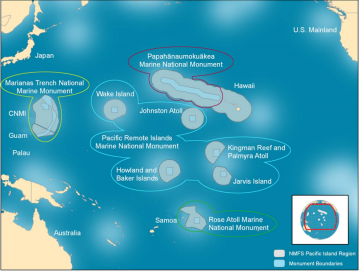 Key US Senators are trying to limit presidential power to designate sweeping national monuments on land and water—an issue that hit home with American Samoa’s fishing industry in the last few years. Senate Energy and Natural Resources Chair Lisa Murkowski and Arizona Senator Jeff Flake have introduced separate bills to curb presidential power under the 1906 Antiquities Act. The law gives the president, sweeping power to designate hundreds of thousands of square miles of ocean and millions of acres of land, as national monuments. President Obama established in 2009, and expanded in 2014, the Pacific Remote Islands Marine National Monument—the largest marine protected area in the world…covering 370,000 square nautical miles, and encompassing important fishing areas for American Samoa’s fishing industry. Read the rest here 13:57
Key US Senators are trying to limit presidential power to designate sweeping national monuments on land and water—an issue that hit home with American Samoa’s fishing industry in the last few years. Senate Energy and Natural Resources Chair Lisa Murkowski and Arizona Senator Jeff Flake have introduced separate bills to curb presidential power under the 1906 Antiquities Act. The law gives the president, sweeping power to designate hundreds of thousands of square miles of ocean and millions of acres of land, as national monuments. President Obama established in 2009, and expanded in 2014, the Pacific Remote Islands Marine National Monument—the largest marine protected area in the world…covering 370,000 square nautical miles, and encompassing important fishing areas for American Samoa’s fishing industry. Read the rest here 13:57
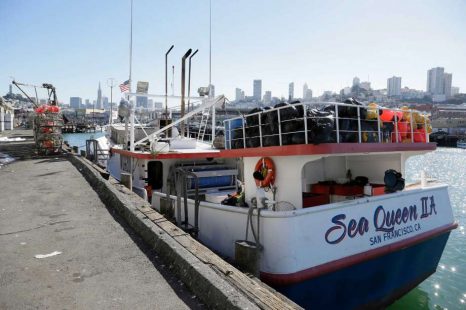
Fishermen Who Fled Slavery in San Francisco Sue Boat Owner
Two Indonesian fishermen who escaped slavery aboard a Honolulu-based tuna and swordfish vessel when it docked at San Francisco’s Fisherman’s Wharf are suing the boat’s owner for tricking them into accepting dangerous jobs they say they weren’t allowed to leave. Attorneys for Abdul Fatah and Sorihin, who uses one name, say in a lawsuit filed in federal court Thursday that they were recruited in Indonesia seven years ago to work in Hawaii’s commercial fishing fleet without realizing they would never be allowed onshore. They have since been issued visas for victims of human trafficking and are living in the San Francisco area. The lawsuit alleges that San Jose, California, resident Thoai Nguyen, owner and captain of the Sea Queen II, forced Sorihin and Fatah to work up to 20-hour shifts, denied them medical treatment and demanded thousands of dollars if they wanted to leave before their contracts expired. Nguyen did not return calls seeking comment. Read the story here 15:05
For Immediate Release – Hawaii Seafood Council: Hawaii Fishing Industry takes action to protect foreign crew from labor abuse
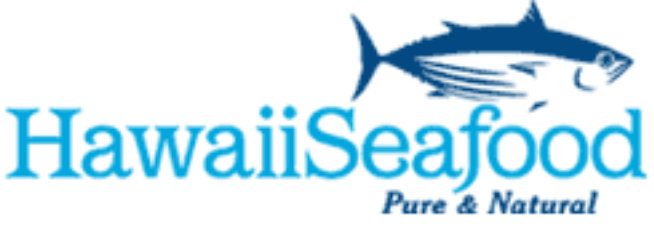 For Immediate Release Hawaii Seafood Council 1130 N Nimitz Hwy, Suite A263 Honolulu, Hawaii 96817 – Hawaii Longline Fishing Industry takes immediate action to assess and establish controls to protect foreign crew from forced labor and labor abuse. On September 8, 2016, an article was published by the Associated Press (AP) which included allegations of forced labor (slavery), human trafficking and poor working conditions on Hawaii longline fishing vessels that use foreign contracted crewmen. “The industry takes the AP report seriously, is actively assessing the situation and is committed to making certain that if found, forced labor and labor abuse is eliminated from the fishing industry” says Jim Cook, Hawaii fishing industry member and advocate. Read the press release, click here 17:46
For Immediate Release Hawaii Seafood Council 1130 N Nimitz Hwy, Suite A263 Honolulu, Hawaii 96817 – Hawaii Longline Fishing Industry takes immediate action to assess and establish controls to protect foreign crew from forced labor and labor abuse. On September 8, 2016, an article was published by the Associated Press (AP) which included allegations of forced labor (slavery), human trafficking and poor working conditions on Hawaii longline fishing vessels that use foreign contracted crewmen. “The industry takes the AP report seriously, is actively assessing the situation and is committed to making certain that if found, forced labor and labor abuse is eliminated from the fishing industry” says Jim Cook, Hawaii fishing industry member and advocate. Read the press release, click here 17:46
Hawaii longline industry creates task force to respond to allegations of human trafficking and poor working conditions.
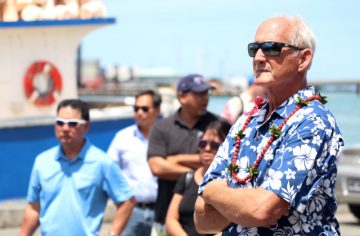 Hawaii longline industry leaders say they have formed a task force and hired an expert on slavery in response to media reports about human trafficking, forced labor and poor working conditions aboard some of their boats. “We’re trying to get a sort of fleet assessment, get our arms around the problem and see where we’re going to take it,” said Jim Cook, who owns several longline fishing boats and serves on the Hawaii Longline Association board of directors. He said Monday that the goal is to weed out the “bad actors,” in part by requiring a universal crew contract that incorporates international norms to address forced labor. That contract is being finalized and should be “ready to rock” in the next couple days, Cook said. The task force also includes John Kaneko, program manager of the Hawaii Seafood Council, Khang Dang, president of Quota Management, and Katrina Nakamura, who was also hired as a consultant to provide guidance to the industry. Read the story here 08:25
Hawaii longline industry leaders say they have formed a task force and hired an expert on slavery in response to media reports about human trafficking, forced labor and poor working conditions aboard some of their boats. “We’re trying to get a sort of fleet assessment, get our arms around the problem and see where we’re going to take it,” said Jim Cook, who owns several longline fishing boats and serves on the Hawaii Longline Association board of directors. He said Monday that the goal is to weed out the “bad actors,” in part by requiring a universal crew contract that incorporates international norms to address forced labor. That contract is being finalized and should be “ready to rock” in the next couple days, Cook said. The task force also includes John Kaneko, program manager of the Hawaii Seafood Council, Khang Dang, president of Quota Management, and Katrina Nakamura, who was also hired as a consultant to provide guidance to the industry. Read the story here 08:25
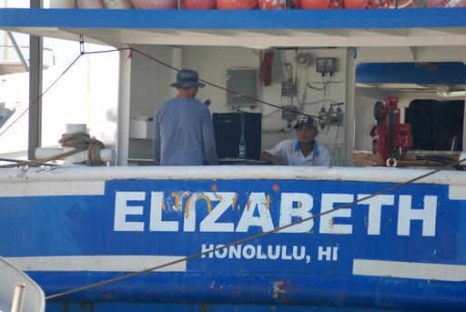
Hawaii lawmakers promise reform for confined fishermen
State and federal lawmakers are promising to improve conditions for hundreds of foreign fishermen working in Hawaii’s commercial fleet, and at least one company has already stopped buying fish from the boats following an Associated Press investigation that found the men have been confined to vessels for years without basic labor protections. While many men appreciate the jobs, which pay better than they could get back home, the report revealed instances of human trafficking, tuberculosis and food shortages. It also found some fishermen being forced to defecate in buckets, suffering running sores from bed bugs and being paid as little as 70 cents an hour. On Capitol Hill, Hawaii’s congressional delegation – U.S. Sens. Mazie Hirono and Brian Schatz along with Rep. Tulsi Gabbard, all Democrats – said they were exploring legislative solutions after being startled by the findings about the state’s $110 million industry, which ranks fifth among the country’s highest-grossing fisheries. Read the story here 06:54
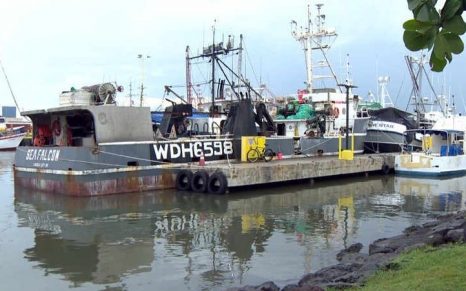
Hawaii’s Longline Fishing industry pushes back following questions about labor practices
Allegations of harsh treatment of workers in Hawaii’s longline fishing fleet have made headlines nationally. Now, the industry is defending itself, one day after a grocery store chain stopped buying tuna from Hawaii’s fish auction. There are 140 longline boats and 700 fishermen in Hawaii’s fishing fleet. The undocumented workers’ employment is legal. “It’s a very in-demand job for them,” Hawaii Longline Association president Sean Martin said. University of Hawaii professor Uli Kozok interprets for Indonesian fishermen. He’s heard complaints of physical abuse aboard the boats. “They’re quite a few stories that I’ve heard where fishermen were beaten by the captain or by the first officer,” he said. He said fishermen complain of insufficient food and third-world working conditions. Martin thinks the allegations are unfounded. “It’s a long ways from slave labor and human trafficking,” he said. Read the story here 11:25

US Labor Dept. to look at conditions affecting foreign workers on American fishing vessels in Hawaii
Labor Department official said the agency is “deeply disturbed” by news reports about the long hours, low wages and inhumane living conditions suffered by up to 700 workers from Southeast Asia and the Pacific islands. The official said the agency was reaching out to other U.S government agencies to try to figure out what to do about it. “The Department of Labor is committed to ensuring that workers are treated with respect, fairness, and dignity,” said Labor Department spokesperson Jason Surbey in an emailed statement. A widely published report by the Associated Press found that some workers are held in prison-like captivity at the piers of Honolulu and San Francisco when the ships are being unloaded. When at sea, the AP reported, they work up to 20 hours a day at wages as low as 70 cents an hour. Read the story here 11:07

Whole Foods drops Honolulu fish auction until it proves fair boat labor
Whole Foods has suspended buying fish from the Hawaii fish auction amid concerns over the labor practices of some fishing vessels. It’s an issue Always Investigating first reported on back in 2013 and is now getting national attention. Fishermen describe horrid working conditions, rock bottom pay, and even allegations of international crew captivity aboard some of the boats that dock at Honolulu Harbor. Industry watchers say the Whole Foods move could be just the first of many, and the fish auction is already working on a system to weed out vessels with unfair labor practices. Telling Always Investigating they have “zero tolerance for human rights abuses,” Whole Foods said Tuesday: “We have suspended purchases of the small amount of fish we source from the Hawaiian seafood auction until we can ensure the working conditions on these boats align with our core values.” Read the story here 12:20
Read Foreign fishermen confined to boats catch Hawaiian seafood Click here
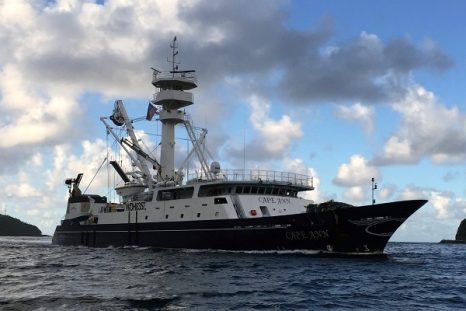
Six year US Tuna Treaty, illegal fishing highlighted in Pacific Island Forum report card
Matai Seremaiah Nawalu, Chair of the Forum Fisheries Committee Ministers, told leaders that while there’s additional administrative and individual processes to complete, the Pacific negotiators have delivered against the mandate handed down by Leaders and Ministers. He said the six year agreement that has been reached is an excellent outcome and asked that the leaders join him in thanking and congratulating the region’s negotiators of the US Tuna Treaty. The treaty allows US purse seiners including those that supply the local canneries access to the exclusive economic zones of Forum member countries which cover a wide swath of the Western and Central Pacific Ocean which contains the largest and most valuable tuna fisheries in the world. Many Pacific Island parties depend on fisheries as one of their most imhportant natural resources, and the United States has for decades sought to be a valued partner in developing regional fisheries. The U.S. purse seine fleet operates according to the highest commercial standards and is subject to strict enforcement by authorities. Read the rest here 13:36
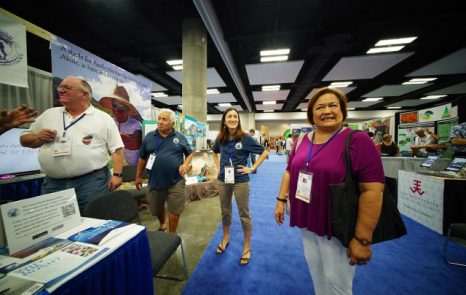
How the WPFMC and Kitty Simonds Crashed Conservation’s Biggest Event
Irreverent might be the best way to describe Kitty Simonds’ feelings about the International Union for Conservation of Nature’s World Conservation Congress, a 10-day event currently taking place at the Hawaii Convention Center. “It’s all about making money,” Simonds said as she looked dismissively at two preteens taking selfies with cardboard cut-outs of elephants and tigers at an environmental exhibition on the convention center floor. Simonds is the executive director of the Western Pacific Fishery Management Council — or Wespac, as it’s more commonly known — a quasi-governmental agency charged with monitoring Pacific fish stocks from Hawaii and American Samoa to Guam and the Northern Mariana Islands. She’s a highly contentious figure in conservation circles, which made her organization’s involvement in the world’s largest environmental conference all the more curious. Simond’s brazen attitude was on full display at the Hawaii Convention Center this week. The agency had it’s own exhibition booth alongside the likes of the Nature Conservancy and World Wildlife Fund. The exhibition stuck out, too. (Kudos to Kitty!) Read the story here 07:51
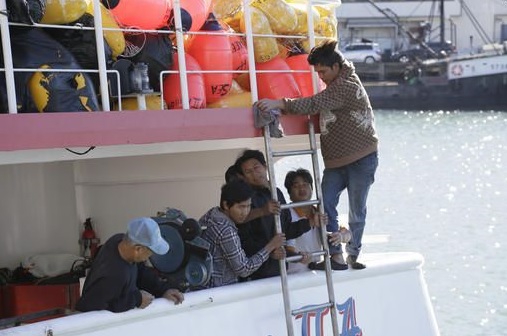
Foreign fishermen confined to boats catch Hawaiian seafood
Hawaii’s high-quality seafood is sold with the promise that it’s caught by local, hard-working fishermen. But the people who haul in the prized catch are almost all undocumented foreign workers, confined to American boats for years at a time without basic rights or protections. About 700 men from impoverished Southeast Asian and Pacific Island nations make up the bulk of the workforce in this unique U.S. fishing fleet. A federal loophole allows them to take the dangerous jobs without proper work permits, just as long as they don’t set foot on shore. Americans buying Hawaiian seafood are almost certainly eating fish caught by one of these workers. A six-month Associated Press investigation found fishing crews living in squalor on some boats, forced to use buckets instead of toilets and suffering running sores from bed bugs. There have been instances of human trafficking, active tuberculosis and low food supplies. (I’m having a very hard time wrapping my head around this.) Read the story here 15:50

Pacific neighbours failed on Friday to strike a deal to protect tuna
Pacific island states and countries failed on Friday to strike a deal to protect shrinking supplies of tuna and adopt cutbacks following a regional conference, officials said, sparking condemnation from conservationists. The 10 participants “could not reach an agreement” on proposed regulation after five days of talks at the Northern Committee of the Western and Central Pacific Fisheries Commission (WCPFC) annual conference, Japan’s Fisheries Agency said in a statement. The partipants, which include Japan, China, the United States, Fiji, Vanuatu, Canada, South Korea, the Philippines, the Cook islands and Taiwan, agreed to the conference after sharp declines in bluefin tuna brood stock last year. Read the rest here 18:55
WWF calls for suspension of commercial tuna fishing
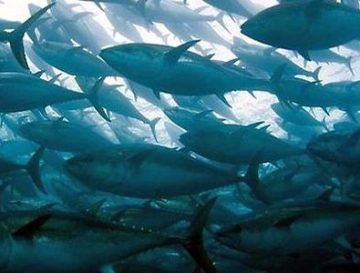 WWF is calling for the immediate suspension of commercial fishing of the Pacific bluefin tuna stock which it says is teetering on the edge of collapse due to what it calls the repeated inaction of responsible bodies. It said that the call follows another failure to agree on an urgently needed recovery plan to save bluefin tuna by Members of the Northern Committee (NC) of the Western and Central Pacific Fisheries Commission (WCPFC). Dr Aiko Yamauchi, the leader of the Oceans and Seafood Group, WWF Japan said: “This is the only way to end overfishing, and to provide hope for a future recovery of the stock. Read the rest here 11:33
WWF is calling for the immediate suspension of commercial fishing of the Pacific bluefin tuna stock which it says is teetering on the edge of collapse due to what it calls the repeated inaction of responsible bodies. It said that the call follows another failure to agree on an urgently needed recovery plan to save bluefin tuna by Members of the Northern Committee (NC) of the Western and Central Pacific Fisheries Commission (WCPFC). Dr Aiko Yamauchi, the leader of the Oceans and Seafood Group, WWF Japan said: “This is the only way to end overfishing, and to provide hope for a future recovery of the stock. Read the rest here 11:33
Obama brings fresh attention to an expanded marine sanctuary (and the fishermen it hurts)
 Yesterday, while visiting Hawaii’s Midway Atoll, President Obama officially made the size of a marine monument twice the size of Texas while highlighting his Climate Change commitment. The monument’s new size has angered local fishermen and Native Hawaiians. The monument, created by President George W. Bush in 2006, puts more land and waters off limits to local fishermen and recreation, and Obama’s critics are calling his actions heavy-handed. The monument is now the largest protected marine Environment in the world or roughly 3.5 times the size of California. A native of Hawaii, Obama used his executive power to expand the Papahānaumokuākea Marine National Monument, making large swaths of fertile fishing grounds off-limits to fishermen. That means they now have to travel at least four times further out to sea to catch fish like tuna, a costly adventure that actually emits more greenhouse gas emissions because of the increased travel time. Hawaiians not only consume three times more fish than landlocked Americans but fishing is a major source of local commerce. Read the rest here 15:03
Yesterday, while visiting Hawaii’s Midway Atoll, President Obama officially made the size of a marine monument twice the size of Texas while highlighting his Climate Change commitment. The monument’s new size has angered local fishermen and Native Hawaiians. The monument, created by President George W. Bush in 2006, puts more land and waters off limits to local fishermen and recreation, and Obama’s critics are calling his actions heavy-handed. The monument is now the largest protected marine Environment in the world or roughly 3.5 times the size of California. A native of Hawaii, Obama used his executive power to expand the Papahānaumokuākea Marine National Monument, making large swaths of fertile fishing grounds off-limits to fishermen. That means they now have to travel at least four times further out to sea to catch fish like tuna, a costly adventure that actually emits more greenhouse gas emissions because of the increased travel time. Hawaiians not only consume three times more fish than landlocked Americans but fishing is a major source of local commerce. Read the rest here 15:03
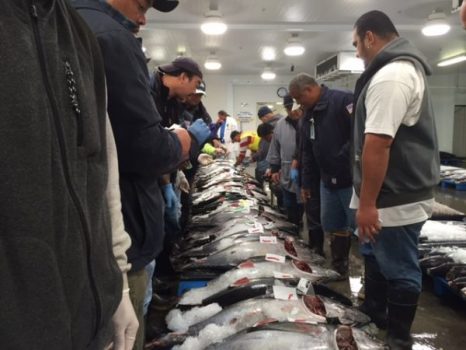
Papahanaumokuakea Expansion Is Counterproductive for Hawaii’s Sustainable Fisheries – Shane Yoshimoto
Hawaii is the most secluded island chain in the world. The ocean and the resources that come out of it are invaluable to the state. Eating and catching fish is a way of life and deeply rooted into the culture. Hawaii consumes nearly three times more seafood annually compared to the rest of the mainland. The last thing we want to do is completely wipe out our oceans and deny future generations the ability to cherish locally caught, fresh fish.,, While the Papahanaumokuakea Marine National Monument may have sounded like a good idea, it is not the right answer for the state of Hawaii, its fishery, and the rest of the United States. The monument expansion proposal lacked transparency and the claims made to justify its protection are not backed by science. Read the article here 09:29
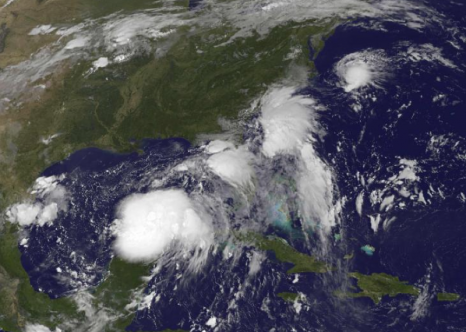
Florida and Hawaii brace as hurricane season hastens
Florida braces for life-threatening floods and fierce winds as Hawaii’s Big Island stares down the barrel of an encroaching hurricane. Forecasters issued a tropical storm warning on Wednesday for the Florida Gulf Coast. National Hurricane Center: ”Persons located within these areas should be prepared to take all necessary actions to protect life and property from rising water.” Florida Governor Rick Scott: Flooding, storm surge, fierce winds and tornadoes were all threats to the region. Could make landfall on Florida’s north-central Gulf Coast on Thursday. Resident on Hawaii’s Big Island warned of an encroaching hurricane expected to bring strong winds and heavy rains. National Weather Service (NWS): Hurricane Madeline [CAT 1] swirling about 235 miles (380 km), forecast to “pass dangerously close” on Wednesday. County of Hawaii: “Preparations to protect life and property should be completed by nightfall today.” Read the latest here 15:27
Hawaii fishermen upset at Hawaii monument expansion
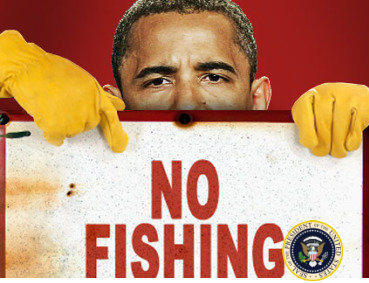 President Barack Obama is to travel to Hawaii this week to mark the new designation of the expanded Papahanaumokuakea Marina National Monument which he signed despite strong opposition from the Hawaii fishing industry. President Obama who was born in Hawaii is expected to cite the need to protect public lands and waters from climate change. The Western Pacific fishery Management Council of which American Samoa is a member voiced disappointment with Obama’s decision, saying it “serves a political legacy” rather than a conservation benefit. Council member from American Samoa Taulapapa Willie Sword told KHJ News in a recent interview the territory should be concerned with the Hawaii monument expansion because “we could be next.” There was also opposition from the fishing industry in Hawaii. Sean Martin, the president of the Hawaii Longline Association, said his organization was disappointed Obama closed an area nearly the size of Alaska without a public process. “This action will forever prohibit American fishermen from accessing those American waters. Quite a legacy indeed,” he said in an email to The Associated Press. The Pew Charitable Trusts helped lead the push to expand the monument. Read the rest here 11:39
President Barack Obama is to travel to Hawaii this week to mark the new designation of the expanded Papahanaumokuakea Marina National Monument which he signed despite strong opposition from the Hawaii fishing industry. President Obama who was born in Hawaii is expected to cite the need to protect public lands and waters from climate change. The Western Pacific fishery Management Council of which American Samoa is a member voiced disappointment with Obama’s decision, saying it “serves a political legacy” rather than a conservation benefit. Council member from American Samoa Taulapapa Willie Sword told KHJ News in a recent interview the territory should be concerned with the Hawaii monument expansion because “we could be next.” There was also opposition from the fishing industry in Hawaii. Sean Martin, the president of the Hawaii Longline Association, said his organization was disappointed Obama closed an area nearly the size of Alaska without a public process. “This action will forever prohibit American fishermen from accessing those American waters. Quite a legacy indeed,” he said in an email to The Associated Press. The Pew Charitable Trusts helped lead the push to expand the monument. Read the rest here 11:39
Western and Central Pacific Fisheries Commission discusses fishing limit of Pacific bluefin tuna
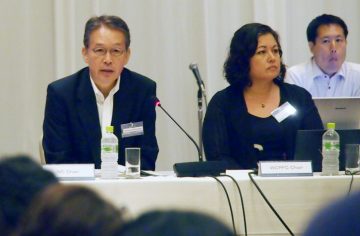 An international fisheries commission began discussing details of fishing restrictions for bluefin tuna in the northern Pacific at a meeting in southwestern Japan on Monday amid concerns about overfishing. At a subcommittee meeting of the Western and Central Pacific Fisheries Commission held through Friday in the city of Fukuoka, participants are discussing the possibility of invoking a catch limit based on Japan’s proposal. The panel is discussing specific control measures with an eye to reaching a formal agreement within this year. Meanwhile, nongovernmental organizations Greenpeace and the Pew Charitable Trusts have issued a statement requesting the WCPFC to immediately implement a 2-year moratorium on all commercial fishing for Pacific bluefin tuna. Read the rest here 15:10
An international fisheries commission began discussing details of fishing restrictions for bluefin tuna in the northern Pacific at a meeting in southwestern Japan on Monday amid concerns about overfishing. At a subcommittee meeting of the Western and Central Pacific Fisheries Commission held through Friday in the city of Fukuoka, participants are discussing the possibility of invoking a catch limit based on Japan’s proposal. The panel is discussing specific control measures with an eye to reaching a formal agreement within this year. Meanwhile, nongovernmental organizations Greenpeace and the Pew Charitable Trusts have issued a statement requesting the WCPFC to immediately implement a 2-year moratorium on all commercial fishing for Pacific bluefin tuna. Read the rest here 15:10
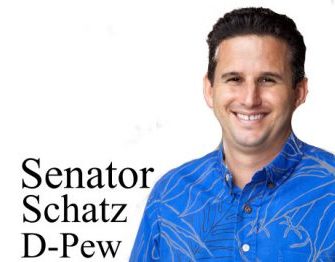
Hawaii Commercial Fishermen, Seafood Consumers Hit Again as President, Pew’s Ocean Legacy Closes Additional 442,778 Square Miles of Fishing Grounds in the U.S. Pacific Islands
“We do not believe the expansion is based on the best available scientific information,” said Kitty Simonds, Council executive director. “It serves a political legacy rather than any conservation benefits to pelagic species such as tunas, billfish, sea turtles, seabirds and marine mammals. The campaign to expand the monument was organized by a multibillion dollar, agenda-driven environmental organization that has preyed upon the public’s lack of understanding of ocean resource management issues and utilized influential native Hawaiians and several high-level politicians to lead this initiative. Our government has chosen to follow the Pew’s Ocean Legacy.” Read the press release here 21:34
Marine Monument excerpts from Press Briefing by Press Secretary Josh Earnest, 8/26/2016
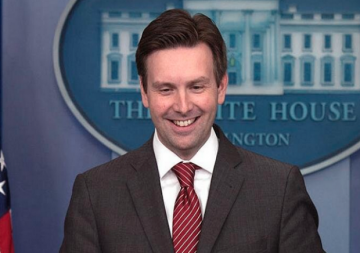 11:52 A.M. EDT MR. EARNEST: Morning, everybody. Happy Friday. Before we get started I’ll just do a — one piece of news you may have seen already. As part of the President’s commitment to protect the natural beauty of the United States, we announced today that President Obama is building on this leadership by taking an historic step in creating the world’s largest marine protected area just off the coast of Hawaii. The designation will more than quadruple the size of the existing marine monument, permanently protecting pristine coral reefs, deep-sea marine habitats, and other important ecological features and resources in the waters of the northwest Hawaiian Islands.,, a lot of scientists have talked about the importance of protecting areas closer to the continental United States — in New England, in the Southeast, in the Gulf. These are proposals,,, Read the rest here 19:03
11:52 A.M. EDT MR. EARNEST: Morning, everybody. Happy Friday. Before we get started I’ll just do a — one piece of news you may have seen already. As part of the President’s commitment to protect the natural beauty of the United States, we announced today that President Obama is building on this leadership by taking an historic step in creating the world’s largest marine protected area just off the coast of Hawaii. The designation will more than quadruple the size of the existing marine monument, permanently protecting pristine coral reefs, deep-sea marine habitats, and other important ecological features and resources in the waters of the northwest Hawaiian Islands.,, a lot of scientists have talked about the importance of protecting areas closer to the continental United States — in New England, in the Southeast, in the Gulf. These are proposals,,, Read the rest here 19:03
Anti Fishing Obama Expands Papahanaumokuakea Marine National Monument
 Obama on Friday will expand a marine national monument off the Northwest Hawaiian Islands to make it the world’s largest marine protected area, encompassing nearly 600,000 square miles and thousands of species of sea life, including endangered sea turtles, whales and black coral beds. The action will make it illegal to conduct any commercial fishing and any type of mineral extraction in the expanded Papahanaumokuakea Marine National Monument, the original 140,000 square miles of which was first protected by President George W. Bush in 2006 and designated a World Heritage Site by the United Nations Education, Scientific and Cultural Organization in 2010. Obama will travel to Hawaii next week to commemorate the new monument with a trip to Midway Atoll, located within the newly protected area, to highlight “how the threat of climate change makes protecting our public lands and waters more important than ever,” the White House said. Read the rest here 03:54
Obama on Friday will expand a marine national monument off the Northwest Hawaiian Islands to make it the world’s largest marine protected area, encompassing nearly 600,000 square miles and thousands of species of sea life, including endangered sea turtles, whales and black coral beds. The action will make it illegal to conduct any commercial fishing and any type of mineral extraction in the expanded Papahanaumokuakea Marine National Monument, the original 140,000 square miles of which was first protected by President George W. Bush in 2006 and designated a World Heritage Site by the United Nations Education, Scientific and Cultural Organization in 2010. Obama will travel to Hawaii next week to commemorate the new monument with a trip to Midway Atoll, located within the newly protected area, to highlight “how the threat of climate change makes protecting our public lands and waters more important than ever,” the White House said. Read the rest here 03:54
Hawaii: War Of Words Escalates As Monument Decision Nears
 Supporters of the fourfold expansion of Papahanaumokuakea Marine National Monument have fired back against an advertisement claiming the proposal would result in people being unable to eat fresh local fish. A coalition called Expand Papahanaumokuakea has been circulating ads supporting the expansion of the monument, which currently covers 139,800 square miles around the Northwestern Hawaiian Islands. The 30-second spot, primarily funded by The Pew Charitable Trusts, features several people explaining why the expansion would be positive, citing the preservation of Native Hawaiian culture, fish stocks and new species yet to be discovered. Read the rest here 16:41
Supporters of the fourfold expansion of Papahanaumokuakea Marine National Monument have fired back against an advertisement claiming the proposal would result in people being unable to eat fresh local fish. A coalition called Expand Papahanaumokuakea has been circulating ads supporting the expansion of the monument, which currently covers 139,800 square miles around the Northwestern Hawaiian Islands. The 30-second spot, primarily funded by The Pew Charitable Trusts, features several people explaining why the expansion would be positive, citing the preservation of Native Hawaiian culture, fish stocks and new species yet to be discovered. Read the rest here 16:41
Summer 2016 edition – WPFMC Pacific Islands Fishery News! Marine Monument Edition
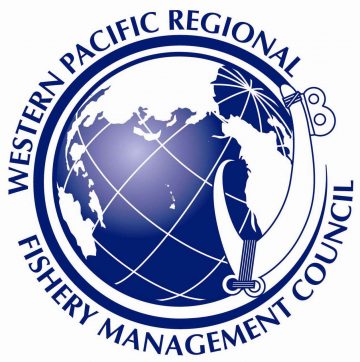 Welcome to the Summer 2016 edition of the Western Pacific Regional Fishery Management Council’s Pacific Islands Fishery News! Click here to download the complete PDF and be sure to allow a few extra seconds for the file to upload. Featured are various Papahanaumokuakea Marine National Monument posts. Elected officials on every coast, being lobbied by every environmental non government organization, are pushing for the final Obama Administration assault on fishing, utilizing the Antiquities Act via Executive Order. This is also happening on the East Coast, the West Coast, and in the Gulf of Mexico. Lots of info. Click here to review! 09:00
Welcome to the Summer 2016 edition of the Western Pacific Regional Fishery Management Council’s Pacific Islands Fishery News! Click here to download the complete PDF and be sure to allow a few extra seconds for the file to upload. Featured are various Papahanaumokuakea Marine National Monument posts. Elected officials on every coast, being lobbied by every environmental non government organization, are pushing for the final Obama Administration assault on fishing, utilizing the Antiquities Act via Executive Order. This is also happening on the East Coast, the West Coast, and in the Gulf of Mexico. Lots of info. Click here to review! 09:00
FDA warns Hawaii seafood processor about handling of tuna
 A seafood-processing facility in Honolulu was found to have “serious violations” of the seafood Hazard Analysis and Critical Control Point (HACCP) regulations during a May 17 and 20 inspection by the U.S. Food and Drug Administration. The resulting warning letter, dated July 27 and sent from the agency’s San Francisco District Office, informed Tropic Fish Hawaii LLC that its “fresh, refrigerated histamine-forming fish products, including Ahi tuna, mahi mahi, and skipjack tuna” are therefore adulterated, meaning that “they have been prepared, packed, or held under insanitary conditions whereby they may have been rendered injurious to health.” Click here to read the article 11:42
A seafood-processing facility in Honolulu was found to have “serious violations” of the seafood Hazard Analysis and Critical Control Point (HACCP) regulations during a May 17 and 20 inspection by the U.S. Food and Drug Administration. The resulting warning letter, dated July 27 and sent from the agency’s San Francisco District Office, informed Tropic Fish Hawaii LLC that its “fresh, refrigerated histamine-forming fish products, including Ahi tuna, mahi mahi, and skipjack tuna” are therefore adulterated, meaning that “they have been prepared, packed, or held under insanitary conditions whereby they may have been rendered injurious to health.” Click here to read the article 11:42
FDA tests confirm hepatitis A in scallops imported from Philippines likely source of outbreak of virus in Hawaii
 U.S. Food and Drug Administration tests found hepatitis A in scallops from the Philippines, which have been identified as the likely source of an outbreak of the virus in Hawaii. The Hawaii Department of Health announced Thursday the FDA laboratory test results of frozen Sea Port Bay Scallops. They’re produced by De Oro Resources Inc. Messages left with the company’s main office in the Philippines weren’t immediately returned. The scallops are imported by Sea Port Products Corp. in Washington state. “I am deeply troubled at the thought that anyone may have become ill from eating product that we shipped,” Sea Port owner Bill Dresser said in a statement. “I am also fully committed to trying to find out how this may have happened and to work to prevent it from happening again not only to Sea Port, but to the entire seafood community.” Read the story here 10:29
U.S. Food and Drug Administration tests found hepatitis A in scallops from the Philippines, which have been identified as the likely source of an outbreak of the virus in Hawaii. The Hawaii Department of Health announced Thursday the FDA laboratory test results of frozen Sea Port Bay Scallops. They’re produced by De Oro Resources Inc. Messages left with the company’s main office in the Philippines weren’t immediately returned. The scallops are imported by Sea Port Products Corp. in Washington state. “I am deeply troubled at the thought that anyone may have become ill from eating product that we shipped,” Sea Port owner Bill Dresser said in a statement. “I am also fully committed to trying to find out how this may have happened and to work to prevent it from happening again not only to Sea Port, but to the entire seafood community.” Read the story here 10:29
All For Sustainability, But Not Monument Expansion
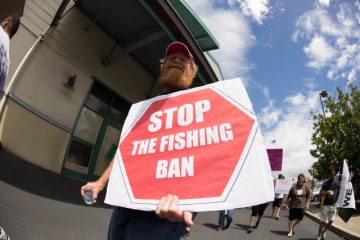 Fish and the ocean are significant to Hawaii’s history and culture. Whether it was fishing from shore or getting a half pound of poke, fish was always apart of my life and now it’s my livelihood. When I first heard of the Papahanaumokuakea National Marine Monument Sanctuary I thought it was a great idea. Protecting the fish, habitats and other marine life is something I stand for. But as I found out more about it, I completely changed my mind. The trend now is to be sustainable — eat sustainable foods and drive cars with sustainable energies. Our Hawaii fishing fleet is an example of fishing sustainably with federal observers onboard, uniquely developed fishing gear and world-renowned handling practices. Strict quotas and GPS tracking on every boat make it nearly impossible to hide anything. Read the rest here 17:26
Fish and the ocean are significant to Hawaii’s history and culture. Whether it was fishing from shore or getting a half pound of poke, fish was always apart of my life and now it’s my livelihood. When I first heard of the Papahanaumokuakea National Marine Monument Sanctuary I thought it was a great idea. Protecting the fish, habitats and other marine life is something I stand for. But as I found out more about it, I completely changed my mind. The trend now is to be sustainable — eat sustainable foods and drive cars with sustainable energies. Our Hawaii fishing fleet is an example of fishing sustainably with federal observers onboard, uniquely developed fishing gear and world-renowned handling practices. Strict quotas and GPS tracking on every boat make it nearly impossible to hide anything. Read the rest here 17:26
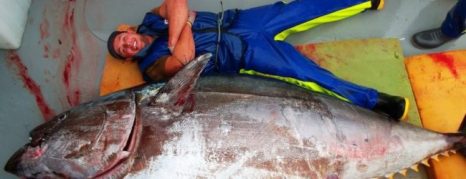
The Pew Calls for Two-Year Ban on Commercial Fishing in Last Effort to Save the Bluefin Tuna
The Pacific bluefin tuna could become extinct if a two-year ban on commercial fishing is not enacted, according to an environmental group. A a recent meeting in Japan, the Pew Charitable Trusts Global Tuna Conservation Program, it was revealed that the current bluefin tuna population is at just 2.6 of it historic size. The stock assessment concluded the world’s largest tuna fishery – located in the western and central Pacific – has been fished down more than 97 percent. “Scientific estimates have indicated that the population of Pacific bluefin tuna is severely depleted. Still, the governments,,, Amanda Nickerson Pew Populations of both Pacific and Atlantic bluefin have been in decline since the 196os. Read the rest here 14:32
How Cat Poop Is Killing the Endangered Hawaiian Monk Seals
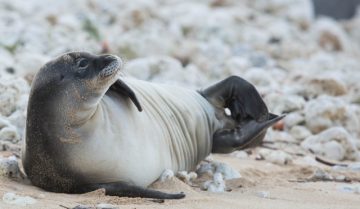 Colonies of feral cats are thriving in neighborhoods all over Oahu, from the University of Hawaii’s Manoa campus to Waianae’s homeless encampment, in alleys behind hotels and along trails in the mountains. But it’s not the smells or caterwauling that is of primary concern to scientists. The biggest issue, federal and state scientists said, is the cats’ unique ability to spread toxoplasmosis, a parasitic disease that has killed at least eight critically endangered Hawaiian monk seals, two spinner dolphins, nene geese and native birds over the past 15 years. The problem is pitting scientists trying to save threatened marine mammals and other creatures against animal rights activists trying to save abandoned cats. “You need to stop it at the source, and that means preventing cats from defecating in the environment, whether it’s in the hills or on the beaches,” said Michelle Barbieri, a wildlife veterinary medical officer with the National Oceanic and Atmospheric Administration’s Hawaiian Monk Seal Research Program. Read the story here 10:24
Colonies of feral cats are thriving in neighborhoods all over Oahu, from the University of Hawaii’s Manoa campus to Waianae’s homeless encampment, in alleys behind hotels and along trails in the mountains. But it’s not the smells or caterwauling that is of primary concern to scientists. The biggest issue, federal and state scientists said, is the cats’ unique ability to spread toxoplasmosis, a parasitic disease that has killed at least eight critically endangered Hawaiian monk seals, two spinner dolphins, nene geese and native birds over the past 15 years. The problem is pitting scientists trying to save threatened marine mammals and other creatures against animal rights activists trying to save abandoned cats. “You need to stop it at the source, and that means preventing cats from defecating in the environment, whether it’s in the hills or on the beaches,” said Michelle Barbieri, a wildlife veterinary medical officer with the National Oceanic and Atmospheric Administration’s Hawaiian Monk Seal Research Program. Read the story here 10:24

































